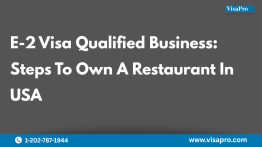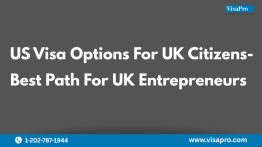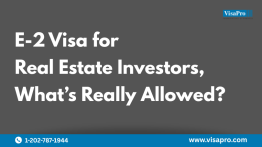Quick Summary:
If you’re a UK entrepreneur or executive preparing to expand your business into the U.S., choosing between the L-1 and E-2 visa can feel overwhelming. This comprehensive guide breaks down the key differences, eligibility criteria, and strategic advantages to help you make the best choice for your business, your family, and your future with complete clarity and confidence.
Understanding Your Visa Options for U.S. Business Expansion
The L-1 and E-2 visas serve fundamentally different purposes in U.S. immigration law. The L-1 visa is specifically designed for transferring executives, managers, or specialized knowledge employees from a foreign parent company to its U.S. affiliate. In contrast, the E-2 visa is tailored for investors from treaty countries who are launching, purchasing, or actively managing a U.S. business venture and supervisory or essential employees from the same country.
Your choice between these visa categories depends on several critical factors: your role in the business, ownership structure, investment capacity, and long-term immigration goals. Many UK entrepreneurs mistakenly assume they must choose one or the other, but strategic businesses often utilize both visa types simultaneously to maximize their U.S. expansion potential.
Case Scenario #1:
A London-based fintech company sends their Chief Technology Officer to establish a Silicon Valley office. Since he’s been with the company for four years in a managerial role, they pursue the L-1A visa pathway, allowing him to set up operations while maintaining his executive position.
Case Scenario #2:
A UK entrepreneur invests £95,000 ($120,000) into acquiring an existing coffee shop franchise in Denver. As the majority investor and day-to-day manager, she applies for the E-2 visa, planning to hire six local employees within 18 months.
The key distinction may lie in your relationship to the business: are you being transferred as an employee, or are you investing as an owner-operator or being transferred after a significant investment has been made? These fundamental differences shape everything from application requirements to long-term immigration strategies.
L-1 or E-2 Visa: Key Eligibility Requirements You Must Meet
L-1 visa applicants must demonstrate continuous employment with a foreign company for at least 1 full year within the past three years in an executive, managerial, or specialized knowledge capacity. The U.S. and foreign entities must maintain a qualifying corporate relationship, parent-subsidiary, branch, or affiliate. There’s no minimum investment requirement, but you must prove the U.S. office can support an executive or managerial position for L-1A and support U.S. operations
E-2 visa candidates must be citizens of a treaty country (the UK qualifies) and show that a “substantial” amount of capital has been invested into the U.S. business. The applicant is filing as an E-2 investor, they must also demonstrate they’re developing and directing the enterprise. The investment must be irrevocably committed, at risk, and sufficient to ensure the business’s successful operation. Like the L-1, there’s no specific dollar threshold, but investments typically range from $100,000 to $200,000 minimum in order to qualify as “substantial”.
The spouse and unmarried children under 21 of both L-1 and E-2 holders can accompany the principal applicant and spouses are eligible to work in the U.S., making family considerations crucial in your decision-making process.
Practical Tip:
For L-1 applications, document your foreign employment history meticulously. USCIS scrutinizes job descriptions, organizational charts, and evidence of your executive or specialized role. Vague titles like “Business Development Manager” would need detailed explanation of actual duties and decision-making authority.
Real-Life Example:
A UK software company’s attempt to transfer their “Senior Developer” was initially denied because USCIS couldn’t verify specialized knowledge. After resubmitting detailed documentation of his proprietary system of expertise and training materials, the petition was approved.
The spouse and unmarried children under 21 of both L-1 and E-2 holders can accompany the principal applicant and spouses are eligible to work in the U.S., making family considerations crucial in your decision-making process.
E-2 vs L-1 Visa: Investment and Business Structure Requirements
E-2 visa investments must be substantial relative to the total cost of purchasing or creating the business. U.S. immigration authorities evaluate substantiality using a sliding scale; the lower the business cost, the higher the percentage of investment required. A $100,000 investment might be substantial for a consulting firm but inadequate for a manufacturing operation. The business must be “non-marginal,” meaning it generates more than just income for the investor and their family.
L-1 visas require no “substantial” investment but demand proof of a qualifying corporate relationship between the foreign and U.S. entities. The U.S. operation can be a branch office, subsidiary, parent or affiliate. New office L-1 petitions receive only one-year initial approval, requiring proof of business viability for extensions.
Strategic Consideration:
Many UK companies initially establish a U.S. branch to expedite market entry, then convert to a subsidiary structure for clearer immigration pathways. This approach requires careful legal and tax planning but offers operational flexibility.
Case Example:
A Manchester-based marketing agency opened a Texas branch office for their Creative Director’s L-1 petition. However, complex ownership documentation and state registration requirements delayed approval by four months. They subsequently formed a Delaware subsidiary for future transfers, streamlining the process significantly.
For E-2 applications, your investment must be “at risk”, meaning you’ve committed funds that could be lost if the business fails. Secured loans, promissory notes, or contingent investments don’t qualify for credit. The business must be active and commercial, not passive investments like real estate or stocks.
E‑2 or L‑1: Which visa fits your U.S. expansion?
Answer a few questions to get a tailored recommendation. No email required to see results.
Recommendation
Legal advice only after direct discussion with our attorneys.
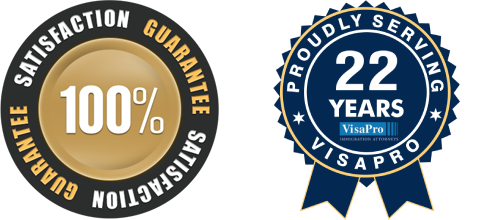
L-1 vs E-2 Visa Processing Times and Approval Strategies
L-1 visa processing typically takes 3-6 months for regular processing, with premium processing available for an additional fee to expedite within 15 business days. New office L-1 petitions face higher scrutiny and, sometimes, longer processing times due to the speculative nature of startup operations. USCIS requires detailed business plans, financial projections, and evidence of sufficient funding to support the proposed position for an L-1 New Office.
E-2 visa processing varies by U.S. consulate but generally takes 2-4 months from application to interview. Unlike L-1 petitions filed with USCIS, E-2 applications can be processed directly at U.S. consulates abroad. London’s U.S. consulate processes E-2 applications relatively efficiently, but thorough preparation is essential for interview success.
Note: U.K. E-2 visa applicants must show residency within the U.K. This requirement is unique to the U.K. and is not generally required for E-2 applicants in other countries.
Success Strategy:
For L-1A new office petitions, prepare comprehensive business plans demonstrating the need for executive or managerial oversight. Include market research, competitor analysis, and detailed staffing projections. USCIS wants evidence that the U.S. office will grow beyond a small operation requiring only the transferred employee.
E-2 applications should also include comprehensive business which contains market research, competitor analysis, and detailed staffing projections. U.S. immigration authorities want to see that E-2 business is poised to grow beyond just simply providing income to the investor or the essential employee.
Common Pitfall:
Many E-2 applicants underestimate the interview preparation required. Consular officers probe deeply into business plans, market knowledge, and operational details. Prepare to explain your industry expertise, competitive advantages, and specific plans for job creation and business growth.
Both visa types benefit from strong legal representation familiar with current USCIS and State Department practices. Immigration policies evolve frequently, and experienced attorneys can navigate changing requirements effectively.
Can You Switch Between L-1 and E-2 Visa Categories?
Yes, you can transition between L-1 and E-2 status, but each change requires meeting the new visa category’s specific requirements. Many entrepreneurs start with L-1 status while employed by their foreign company, then switch to E-2 after investing personal capital into the U.S. operation. This strategy allows you to establish business infrastructure while maintaining employment stability and avoiding the need for a large initial financial investment.
The transition process requires careful timing and documentation. You cannot simply change your status; you must qualify independently for the new visa category. L-1 to E-2 transitions is common when foreign employees become investors or purchase the U.S. operation from their employer.
Strategic Example:
A UK parent company initially transfers their Sales Director to the U.S. on an L-1 New Office visa. After 8 months, the company invests £150,000 to further expand the company. The Sales Director transitions to an E-2 visa. This transition allows him greater operational flexibility while maintaining the potential for permanent residency pathway through the EB-1C process.
Important Consideration: Some companies use both visa types simultaneously, placing founders or major investors under E-2 status while transferring key employees via L-1, or vice versa. This hybrid approach maximizes team deployment while maintaining clear role distinctions.
Planning Tip: If you’re considering eventual permanent residency, factor this into your visa choice. L-1A holders may qualify for EB-1C multinational executive green cards, while E-2 holders typically need alternative pathways like EB-5 investor visas or employment-based categories unless they can maintain the proper relationship between the company abroad and the company in the U.S.
Making Your Decision: L-1 vs E-2 Visa Assessment Framework
Your optimal visa choice depends on six critical factors: your role in the business, ownership percentages, available investment capital, business stage, family considerations, and long-term immigration goals. Create a decision matrix evaluating each factor’s importance to your specific situation.
Decision Framework Questions:
- Are you transferring as an employee or investing as an owner?
- Does your foreign company have established operations for at least one year?
- Can you personally or your foreign employer invest $100,000+ into the U.S. business?
- Do you need operational flexibility or structured employment?
- Are you planning eventual permanent residency?
- Does your spouse need immediate work authorization?
Scenario Analysis: A tech startup founder should generally choose E-2 for maximum operational control and flexibility. A multinational corporation expanding established operations typically benefits from L-1 for structured employee transfers and clearer corporate relationships.
Risk Assessment: L-1 visas carry lower financial risk but greater immigration uncertainty for new offices. E-2 visas require substantial investment risk but offer more predictable renewal pathways for successful businesses.
Consider consulting with both immigration attorneys and business advisors to evaluate tax implications, corporate structure options, and long-term strategic planning. The visa choice impacts not only your immigration status but also business operations, tax obligations, and growth strategies.
Frequently Asked Questions
1.What is the difference between an E-2 visa and L-1 visa?
An E-2 visa is designed for investors from treaty countries who are investing substantial capital into and actively managing a U.S. business and their supervisory and essential employees from the same treaty country. An L-1 visa transfers executives, managers, or specialized knowledge employees from a foreign company to its U.S. affiliate or subsidiary (regardless of nationality).
2.Which is better for a small business: L-1 or E-2 visa?
The E-2 visa is typically better for small business owners or entrepreneurs who are investing their own capital and will actively manage daily operations. The L-1 visa suits established companies transferring key personnel to oversee U.S. expansion as employees rather than owners.
3.Can I apply for both L-1 and E-2 visas simultaneously?
You cannot hold both visa types simultaneously as an individual, but companies often use both strategically, placing investors on E-2 status while transferring employees via L-1. Each person must qualify independently for their respective visa category.
4.Do spouses of L-1 or E-2 visa holders need separate work authorization?
No, spouses receive derivative L-2 or E-2 status and are eligible to work immediately upon entering the US in L-2 or E-2 dependent status (or after a change of status is approved). They do not need to apply for an Employment Authorization Documents (EAD) to work legally in the U.S. Children under 21 can attend school but cannot work unless they can independently obtain alternative nonimmigrant visa status which allows them to be employed.
5.Is the investment requirement the same for E-2 vs L-1 visa applications?
No, E-2 visas require substantial investment (typically $100,000-$200,000 minimum) that must be at risk and committed to the business. L-1 visas have no personal investment requirement but need proof that the U.S. operation can financially support the transferred position.
Are You Ready to Launch Your U.S. Business Expansion?
Whether you’re a startup founder investing in your American dream or a CEO scaling operations across the Atlantic, choosing the right visa strategy is crucial for success.
At VisaPro, we’ve helped hundreds of UK businesses and families successfully navigate U.S. immigration, without unnecessary delays, complications, or costly mistakes.
Schedule Your Free U.S. Visa Strategy Assessment Today
Let our top immigration lawyers evaluate your specific situation and recommend the optimal visa pathway for your business and family goals.
What VisaPro Customers Are Saying
The US [B-1] Visa has always been a tough ride, and being denied a few times it makes it even worse. But thanks to VisaPro and their meticulous processing I was granted a Visa. I would like to thank you and all the people involved in making this a success. I would like to recommend VisaPro to all those who seek peace of mind and hassle free Visa processing.”
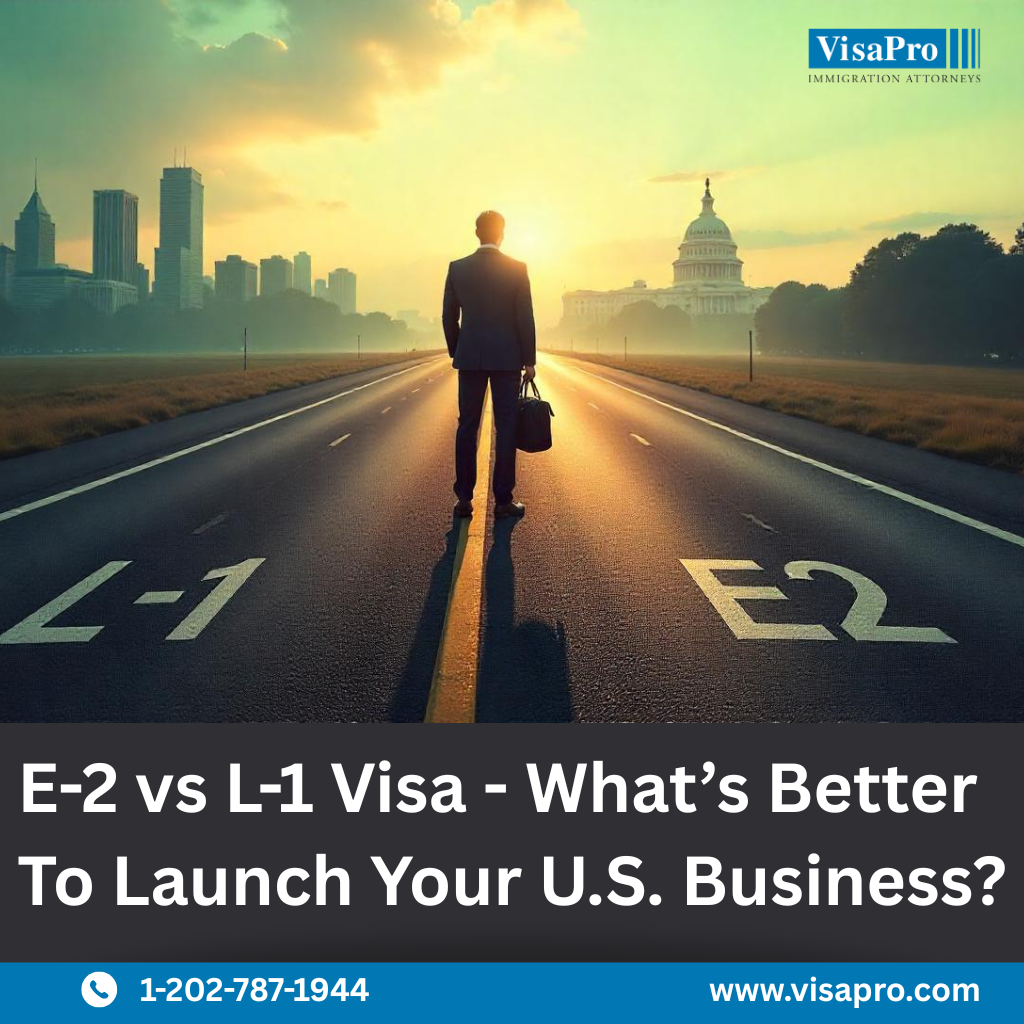
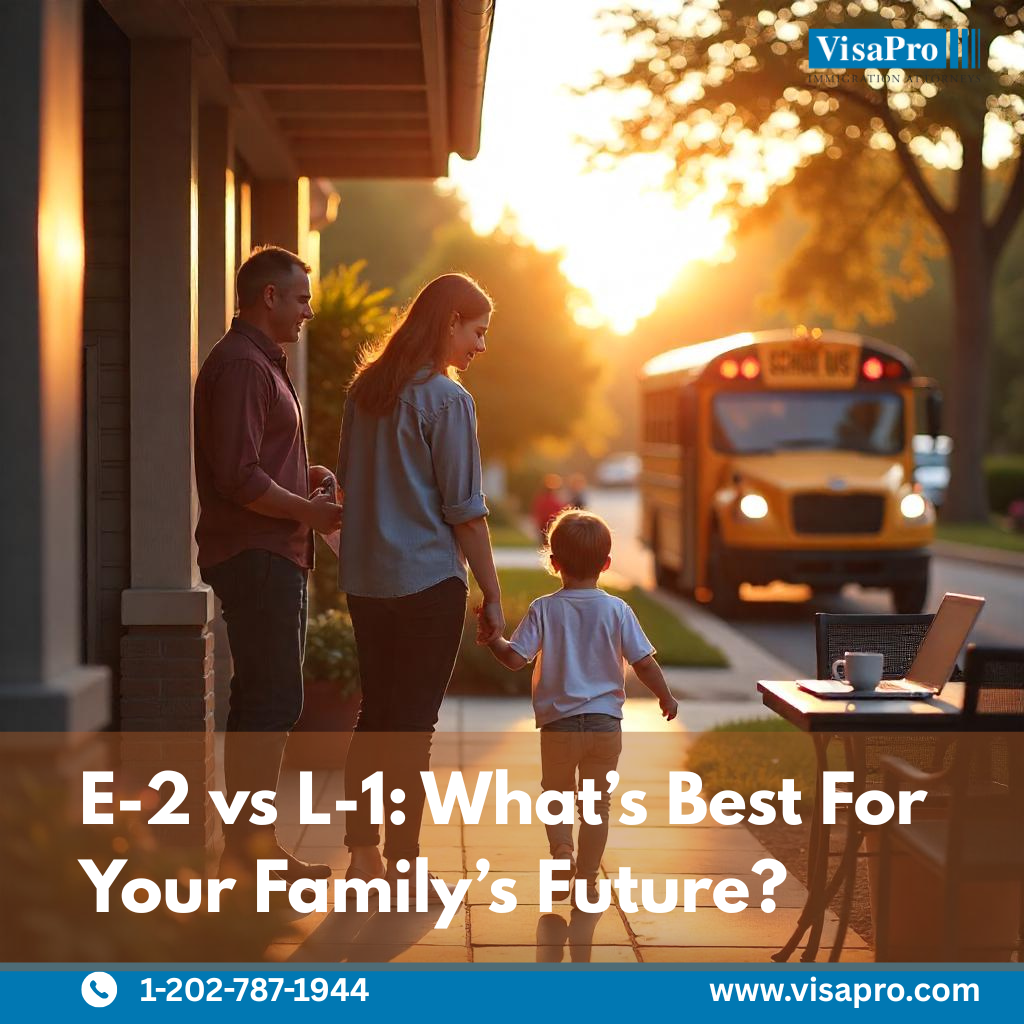
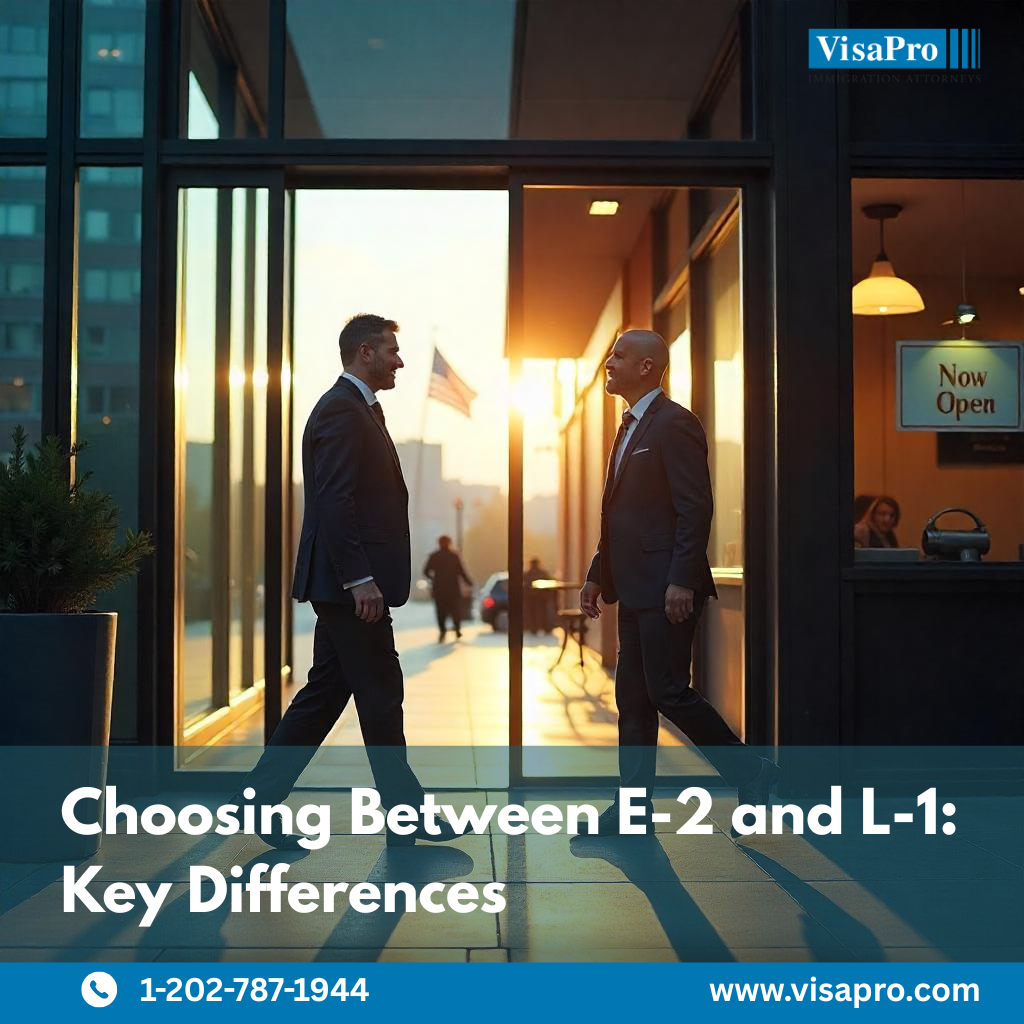
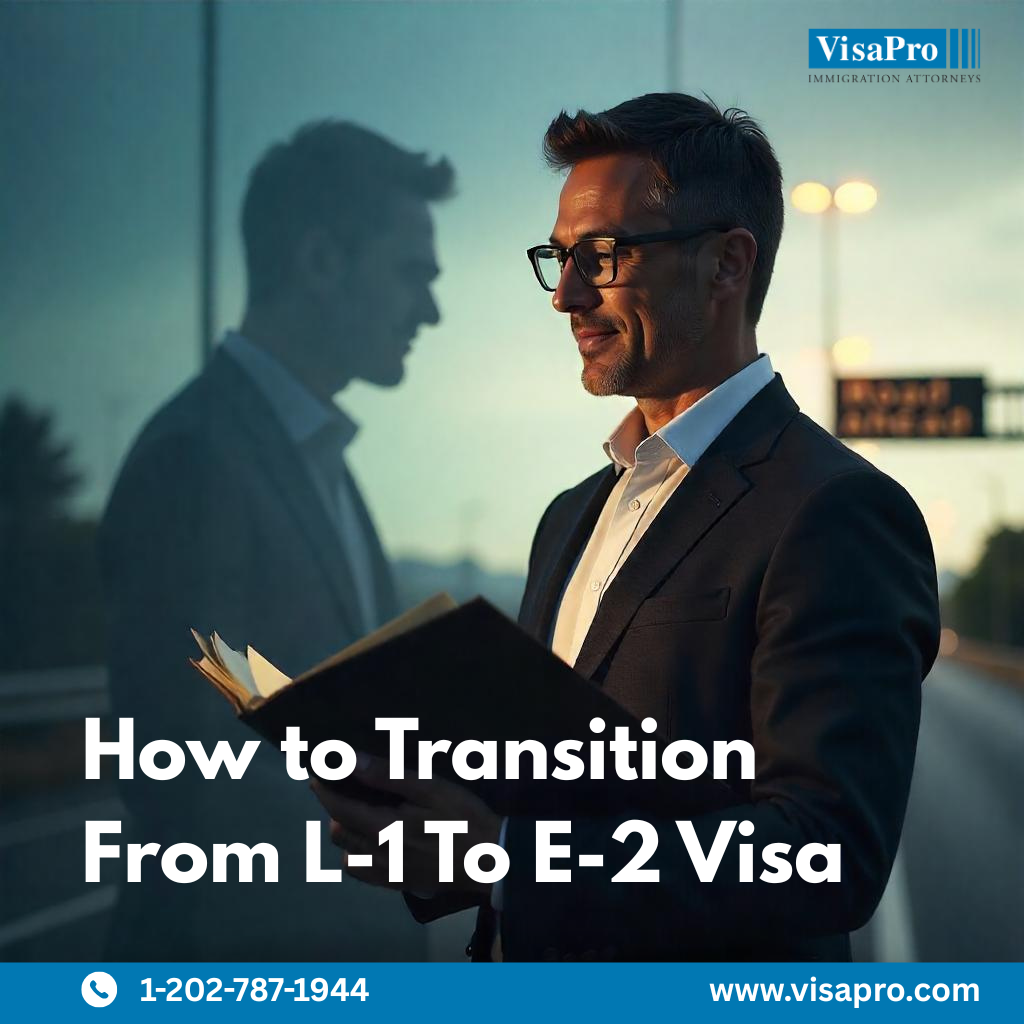
 Manas Bhat, Director Operations, First Houston Mortgage India
Manas Bhat, Director Operations, First Houston Mortgage India